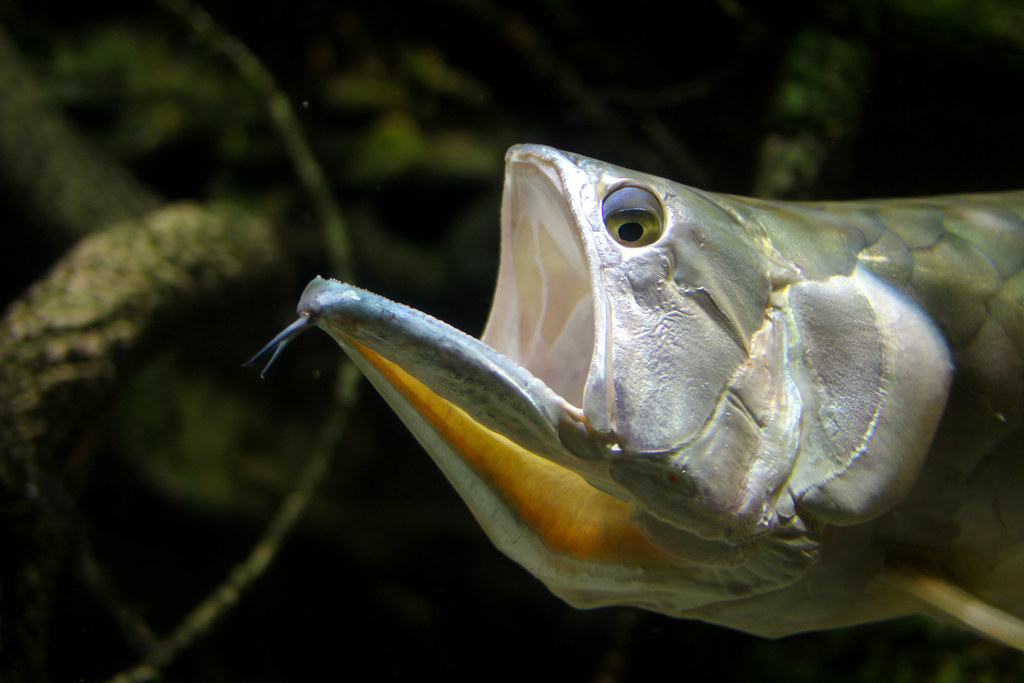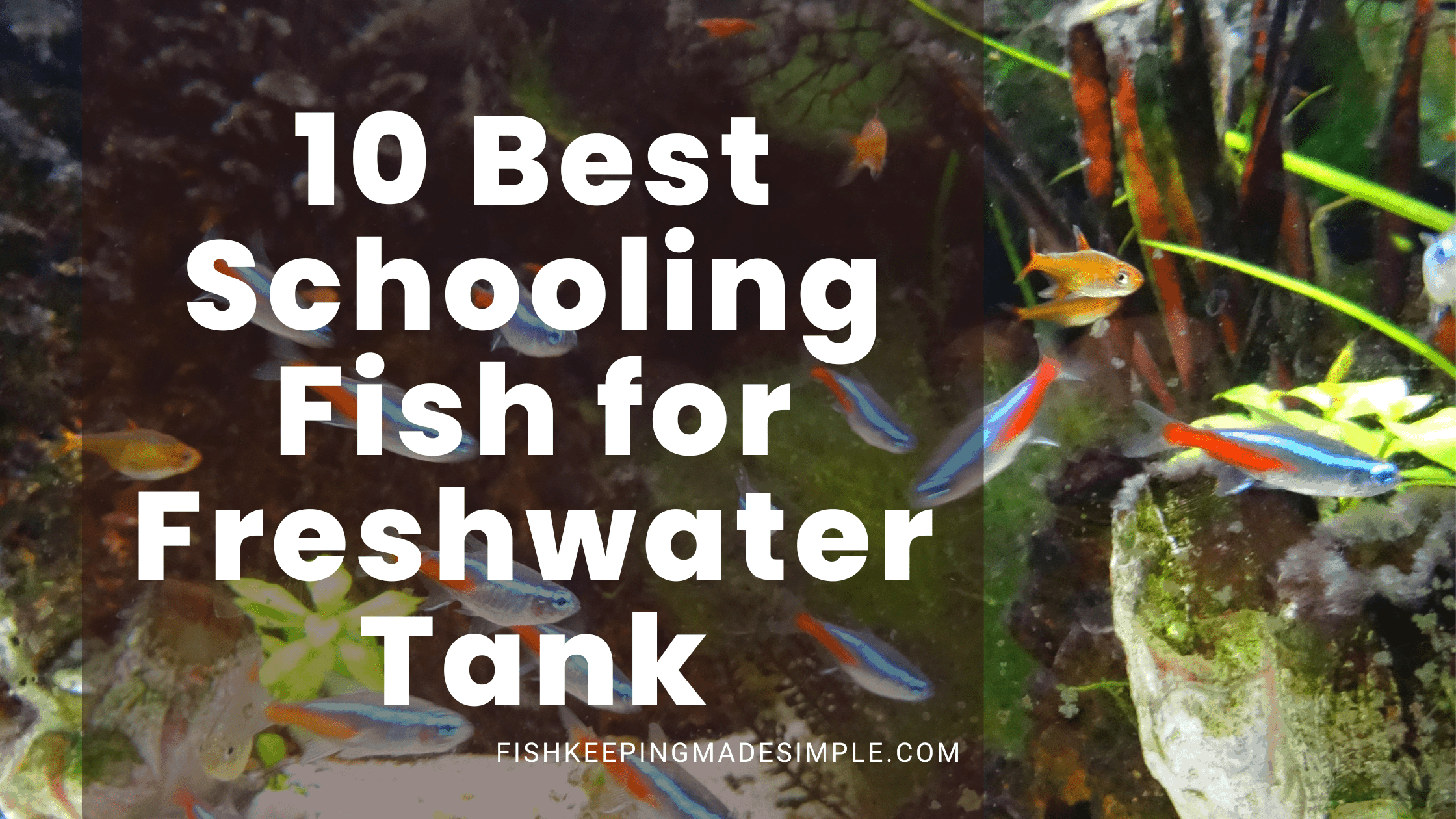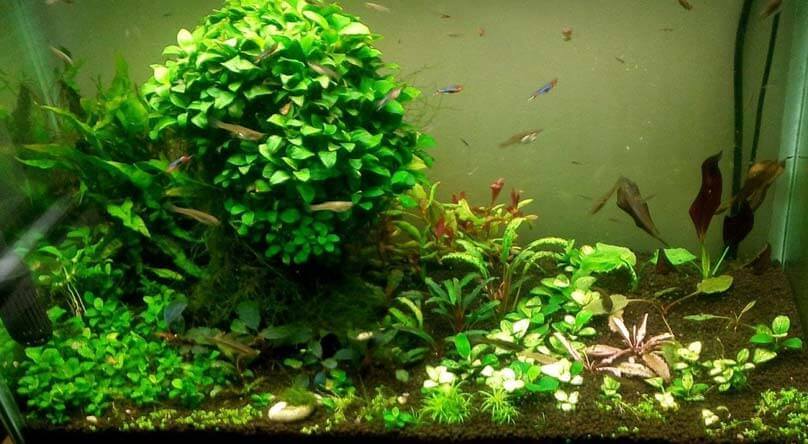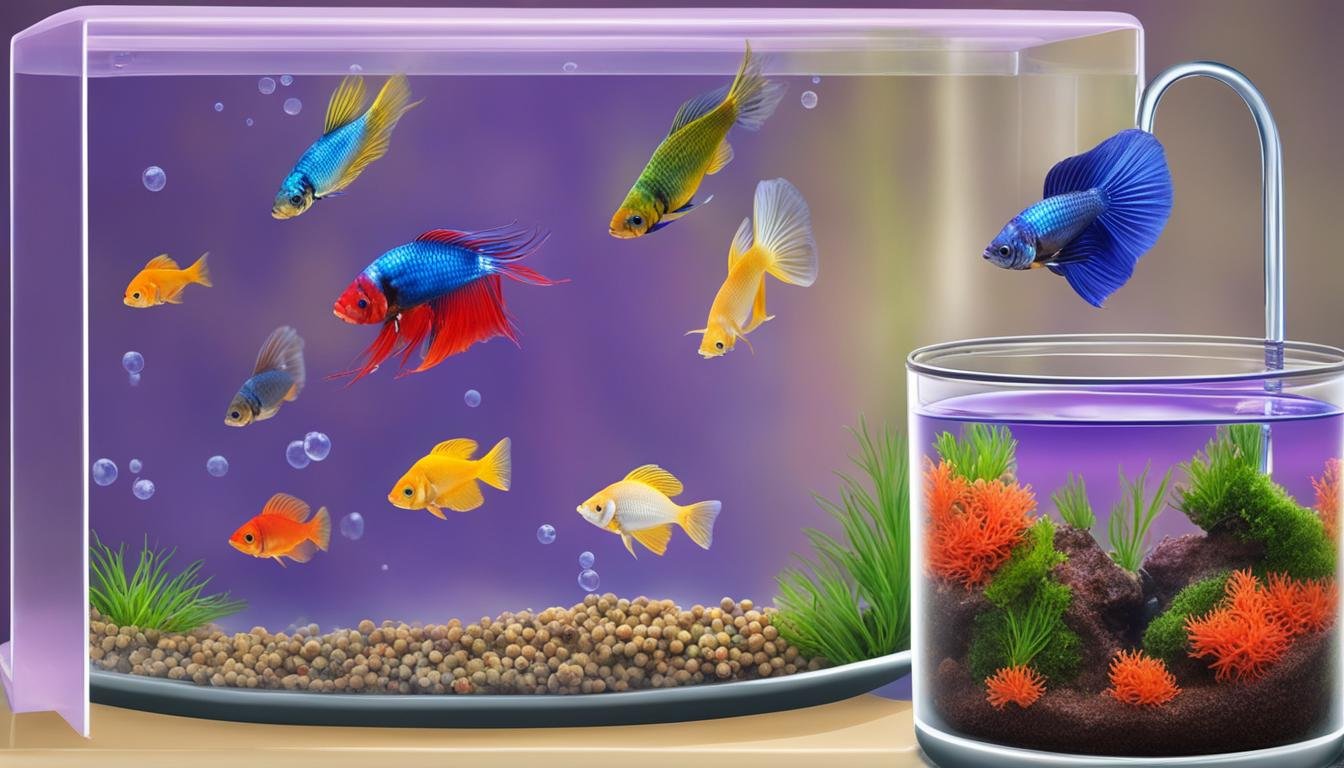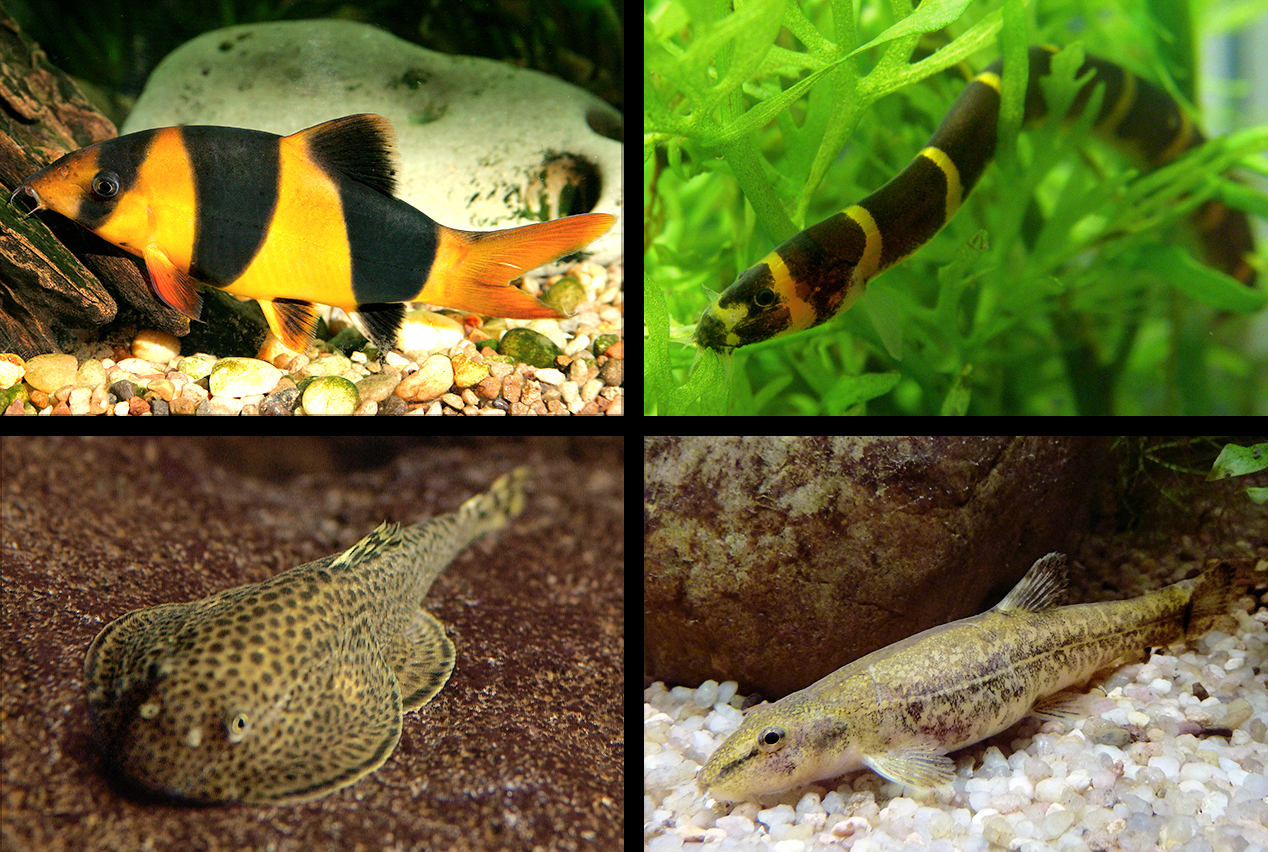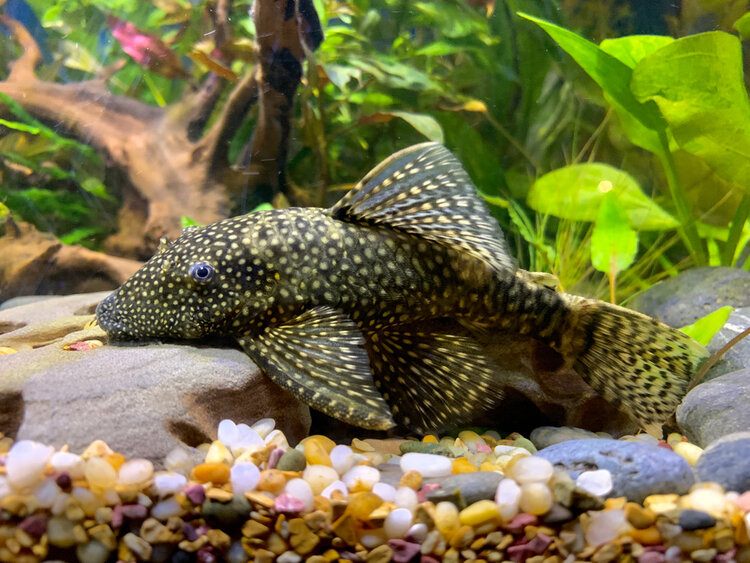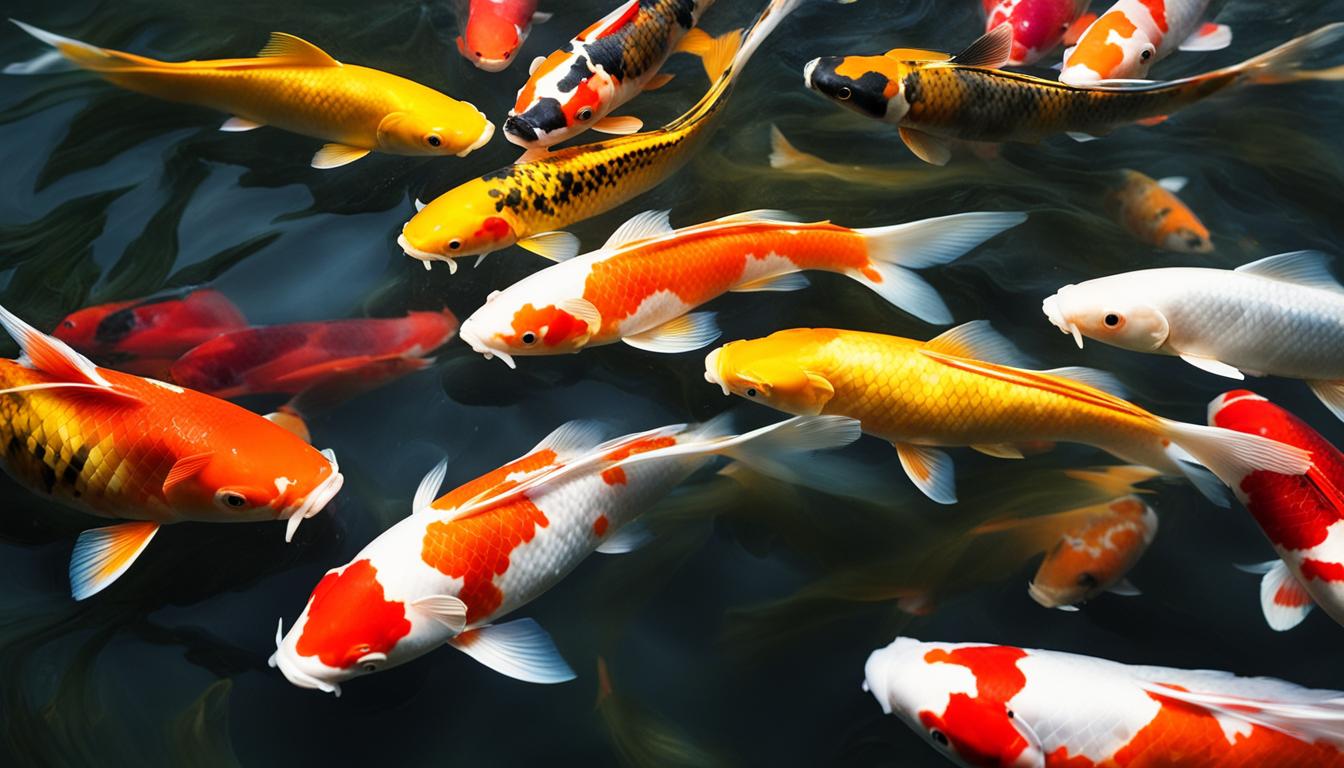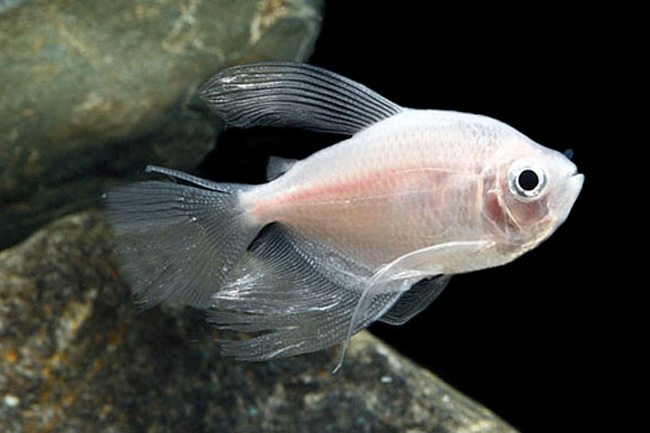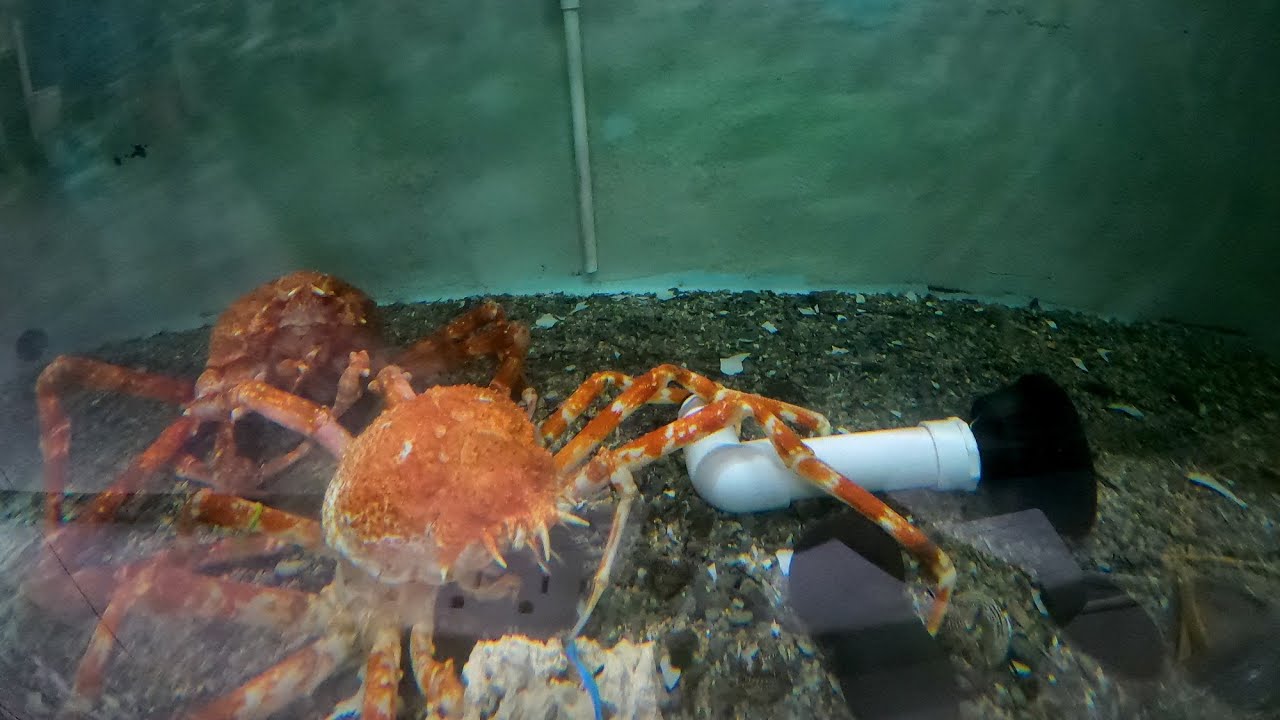Did you know that nearly 70% of first-time breeders struggle to get their Arowana fish to spawn successfully? The delicate balance of conditions needed for Arowana breeding is intricate, requiring careful attention to detail and steadfast dedication.
Successfully witnessing Arowana spawning and nurturing Arowana fry is a process that begins with selecting the right breeding pairs and extends to optimizing their environment and diet throughout the Arowana breeding season.
Embarking on the journey of breeding Arowana fish requires meticulous preparation, a profound comprehension of the species, and an unwavering commitment to their well-being. From selecting the right breeding pairs to providing optimum tank conditions and diet, the process is intricate.
However, this journey offers a rewarding opportunity to witness the growth of these majestic creatures, from the initial spawning phase to the nurturing of Arowana fry. This guide serves as an introductory pathway for beginners, illuminating the path to successful Arowana breeding and offering insights derived from seasoned breeders and expert resources.
Table of Contents
Key Takeaways
- Understanding the unique requirements for Arowana spawning and breeding seasons.
- Importance of selecting healthy and compatible Arowana breeding pairs.
- Creating an optimal tank setup for promoting Arowana spawning.
- Maintaining ideal water parameters to support Arowana breeding conditions.
- Recognizing and responding to Arowana spawning behaviors and nurturing Arowana fry.
- Gaining insights from expert resources and experienced breeders for better success.
Introduction
As we embark on this Arowana Fish Breeding Guide, it’s important to appreciate the cultural and symbolic significance these majestic fish hold. Often regarded as harbingers of good luck, Arowanas are hailed in various traditions worldwide. Whether you’re looking to start Arowana breeding as a hobby or an investment, understanding the fundamental aspects will set you on the right path.
Firstly, the allure of Arowanas lies not only in their aesthetic beauty but also in their rarity and value. Successfully breeding these “dragon fish” can be both financially rewarding and personally satisfying. However, it requires dedication, patience, and meticulous Arowana care to ensure that your breeding endeavor is fruitful.
To start Arowana breeding, it’s crucial to grasp best practices that seasoned breeders advocate. This includes insights on tank environments, dietary needs, and the breeding habits specific to Arowanas. With the right knowledge and preparation, you can transform your aquarium into a thriving breeding ground for these exquisite fish.
We will walk you through the essential steps, from the initial setup to nurturing the fry. By the end, you will be well-equipped to begin your journey with a thorough understanding of what it takes to breed Arowana fish successfully. Setting clear expectations and understanding the commitment involved will ensure a rewarding experience in your Arowana care journey.
Understanding Arowana Species
Delving into the distinct species of Arowanas is crucial for any enthusiast looking to breed these remarkable fish successfully. Here’s an Arowana Species Overview to guide your understanding and raise awareness about their unique needs.
Common Arowana Species for Breeding
When it comes to breeding, the most widely favored Arowana species include:
- Asian Arowana
- Silver Arowana
- Jardini Arowana
- Black Arowana
Each of these species presents its own set of challenges and joys, from the precise Specific Arowana Care necessary for Asian Arowana to the unique beauty of the Silver Arowana.
Species-Specific Requirements
Understanding the Arowana Tank Requirements for each species is paramount. While there are standard practices, each Arowana type has its own nuanced needs:
- Asian Arowana: Requires a larger tank with a secure cover due to its jumping tendency, water temperature between 75-80°F, and a slightly acidic pH.
- Silver Arowana: Prefers a much larger tank, given its potential size of up to 35 inches in captivity. The ideal water conditions are similar to the Asian Arowana, with an emphasis on cleanliness and stability.
- Jardini Arowana: This species needs a heavily decorated tank to simulate its natural environment, with water temperatures around 77-86°F.
- Black Arowana: Known for its adaptability, this species still benefits from a spacious tank and a pH level that closely mimics its native Amazonian waters, ideally between 6.5 and 7.5.
Proper knowledge and implementation of Specific Arowana Care emphasize the importance of tailored environments. This not only supports effective breeding but ensures the overall health and longevity of these majestic fish.
Choosing Breeding Pairs
Selecting the right Arowana breeding pairs is a cornerstone of successful fish farming. Careful consideration must be given to their health, compatibility, and overall breeding potential. Robust pairs ensure a healthy lineage and a higher chance of successful spawning.
Selecting Healthy Arowanas
One of the key steps in the process is Arowana Health Selection. It is essential to choose fish that display strong signs of vitality and well-being. Look for clear eyes, vibrant scales, and active swimming behaviors. These indicators suggest that the fish are in prime condition for breeding. Regular health check-ups and a balanced diet also play crucial roles in maintaining the readiness of breeding pairs.
Pair Compatibility
Equally important is the process of Arowana Pair Bonding. Establishing a compatible pair involves observing their interactions and ensuring they exhibit complementary behaviors. Some signs of a good match include synchronized swimming and mutual grooming. These behaviors indicate a bond that can lead to successful spawning. It’s important to monitor the pair closely to ensure persistent compatibility throughout their breeding lifecycle.
By focusing on Arowana Health Selection and Arowana Pair Bonding, breeders can significantly enhance the success rates of their Arowana breeding pairs. This foundational step sets the stage for a thriving breeding process, ensuring the health and vigor of the next generation of Arowanas.
Optimal Arowana Tank Setup for Breeding
Creating an optimal environment for Arowana fish to spawn is integral to their breeding success. The right Arowana tank setup can make or break the breeding process, ensuring the fish feel comfortable and mirror their natural habitat. Here, I will share extensive insights into tank size, substrate choices, and vital filtration settings for an effective Arowana breeding environment.
Tank Size and Specifications
The initial step in setting up an Arowana breeding environment is selecting the proper tank size. Arowanas are large, majestic fish, and they require ample space to thrive. I recommend a tank that is at least 250 gallons to ensure the fish have enough room to swim and display natural behaviors. The dimensions should primarily focus on providing depth and length, enhancing their comfort and reducing stress levels.
Substrate and Decorations
Choosing the right substrate and decorations is vital to replicate the natural habitats of Arowanas. For the substrate, a fine gravel or sand base is ideal as it mimics riverbeds found in the wild and minimizes injury risks. Decorative elements such as large driftwood, rocks, and plants create hiding spots and induce a more authentic Arowana breeding environment, promoting their spawning instinct.
Filtration and Aeration
Arowanas demand pristine water conditions, making effective Arowana tank filtration essential. A high-capacity canister filter or sump system is recommended to handle the bioload efficiently. Installing a proper aeration system will ensure oxygen levels are maintained, creating a stable and healthy environment for the fish. Cycling the tank and maintaining regular water changes are key to sustaining an ideal Arowana tank setup, enhancing water quality and mimicking the dynamic conditions Arowanas flourish in.
Arowana Water Parameters
The success of breeding Arowanas heavily relies on maintaining the ideal water parameters in their tank environment. Ensuring stringent control over temperature, pH levels, and water quality is paramount to achieving favorable breeding outcomes. Let’s delve into the specific parameters that need to be meticulously observed for optimal Arowana tank conditions.
Temperature Range
Arowanas thrive in water temperatures ranging between 75°F and 82°F. This temperature spectrum is crucial as it mirrors their natural habitat, encouraging healthy spawning behaviors. Consistently monitoring and adjusting the tank’s temperature with reliable heaters and thermometers ensures the fish remain within this critical range.
pH Levels
Maintaining an appropriate Arowana water pH balance is essential for their well-being and reproductive success. A pH range of 6.0 to 7.5 is ideal, slightly acidic to neutral. Regular testing using a pH meter and making incremental adjustments with appropriate conditioners can help maintain this delicate balance, promoting a conducive breeding environment.
Water Quality Maintenance
Upholding impeccable Arowana water quality is essential, as poor water conditions can stunt growth and lead to health complications. Key measures include:
- Employing high-quality filtration systems to remove impurities effectively.
- Regular water changes, approximately 25% weekly, to prevent toxin buildup.
- Monitoring and adjusting tank conditions, ensuring low levels of ammonia and nitrates.
Implementing these strategies will create an optimal breeding environment for Arowanas, ensuring their health and vitality through precise water quality management.
Conditioning Arowana Breeding Pairs
Successfully conditioning Arowana breeding pairs involves meticulous attention to their environment and diet. The aim of Arowana Breeding Pair Conditioning is to create optimal conditions that mimic their natural habitat, thus stimulating breeding behaviors. This process requires gradual modifications to their tank setup and water parameters, ensuring they feel secure and ready to engage in spawning activities.
One of the key elements in Arowana Breeding Pair Conditioning is adjusting their diet. Introducing a variety of nutrient-rich foods, such as live insects and high-quality pellets, can significantly enhance their health and trigger Arowana Spawning Stimulation. It’s essential to monitor their feeding habits and gradually increase the frequency and quantity of food as they approach the breeding season.
Additionally, replicating seasonal changes plays a vital role. Gradual adjustments in water temperature and pH levels can effectively simulate the onset of the breeding season, promoting Arowana Breeding Readiness. Ensuring the tank is minimally disturbed during this period enhances the likelihood of successful courtship and spawning.
| Conditioning Techniques | Details |
|---|---|
| Dietary Changes | Introduce live insects, high-quality pellets, and increase feeding frequency. |
| Environmental Adjustments | Gradual changes in water temperature and pH levels to simulate seasonal shifts. |
| Minimized Disturbances | Avoid major changes and disturbances in the tank during conditioning. |
By following these conditioning techniques, breeders can effectively support Arowana Spawning Stimulation and enhance the overall Arowana Breeding Readiness of their pairs. Consistent observation and adjustments based on the behavior of the fish will lead to a greater chance of successful breeding.
Simulating Natural Conditions
When it comes to successfully breeding Arowana fish, replicating their natural habitat can play a critical role. This process ensures that the fish are comfortable and physiologically prepared to enter their reproductive phase. The two main factors to consider are the light cycle and diet adjustments.
Light and Day-Night Cycles
A crucial aspect of Arowana breeding conditions is the manipulation of light cycles. By mimicking the natural day-night cycles of their native habitat, we can encourage spawning behaviors. I recommend setting up a timer that simulates 12 hours of daylight followed by 12 hours of darkness. This balance is essential for aligning the fish’s internal clock with breeding readiness.
Diet Adjustments
The Arowana diet for breeding needs specific adjustments to boost their energy and reproductive capabilities. Incorporate protein-rich foods such as live insects, shrimp, and pellets specifically formulated for breeding fish. This high-protein diet should be maintained consistently to ensure optimal health and fertility. Moreover, adding vitamins and supplements will further enhance their readiness for breeding activities.
| Aspect | Recommended Condition |
|---|---|
| Arowana Light Cycles | 12 hours light / 12 hours dark |
| Arowana Diet for Breeding | High-protein foods + vitamins |
Arowana Spawning Behavior
The recognition of Arowana courtship behavior and understanding the spawning process are crucial for any breeder aiming for success. I have observed fascinating rituals that these majestic fish display when they are ready to spawn.
Signs of Courtship
During courtship, Arowanas exhibit several distinct behaviors. Males often display brighter colors and perform intricate swimming patterns to attract females. They might also chase and gently nudge the females, indicating their readiness to spawn. Understanding these Arowana spawning signs helps in identifying the right time to intervene.
Spawning Process
A keen understanding of the Arowana spawning methodology ensures successful breeding outcomes. The actual spawning process involves the female laying eggs that the male then fertilizes. Post-fertilization, the male carefully collects the eggs in his mouth, a behavior known as mouthbrooding, which protects the eggs until they hatch. Keeping an eye on these processes can provide insights into the health and readiness of the breeding pair.
Overall, recognizing and supporting these behaviors is key to enhancing the breeding success of Arowana fish, providing them with an environment conducive to natural reproduction.
Arowana Egg Care
Ensuring the well-being of Arowana eggs post-spawning is pivotal for a successful breeding outcome. Understanding the distinct stages from hatching to fry care makes a significant difference in the survival rate and quality of the offspring.
Hatching Process
The hatching process of Arowana eggs typically spans several days. Constant monitoring is crucial to manage water parameters effectively, ensuring the eggs remain at optimal temperature and pH levels. During this phase, meticulously maintaining these conditions supports the successful emergence of the fry.
Protecting the Eggs
Arowana egg protection encompasses safeguarding the eggs from fungal infections and potential predators, which may include other fish in the tank. Utilizing barriers or breeding boxes can offer added security. Observation is key to promptly removing any eggs that display signs of fungal growth to prevent contamination.
| Egg Care Procedure | Details |
|---|---|
| Monitoring Water Quality | Maintain stable temperature and pH levels. |
| Fungal Prevention | Use antifungal treatments and promptly remove infected eggs. |
| Safety Measures | Employ barriers to protect eggs from predators. |
| Regular Observation | Check for signs of infection and take immediate action. |
In conclusion, diligent supervision and precise management of the arowana hatching and egg protection phases significantly enhance the likelihood of raising healthy fry. Equipping yourself with the knowledge and tools to address these tasks is crucial in your journey of Arowana breeding.
Caring for Arowana Fry
Caring for newly hatched Arowana fry is crucial for their healthy growth and development. This section outlines initial feeding protocols and steps to maintain optimal water quality for the best results in Arowana young care.
Initial Feeding
The first and foremost step in Arowana fry feeding is to provide an appropriate diet. Initially, the fry will rely on their yolk sacs for nutrition. Once the yolk sac is absorbed, small live foods such as brine shrimp or microworms are suitable due to their high protein content. It’s essential to feed them small, frequent meals to ensure proper growth and avoid overfeeding, which can pollute the water.
Maintaining Water Quality
Ensuring pristine water quality is pivotal for Arowana fry maintenance. Regular water changes, about 10-20% daily, help in stabilizing the water conditions. The temperature should be kept between 80-82°F, and the pH should remain stable between 6.5 to 7.5. Make sure to use gentle filtration to prevent any strong currents that could stress the fry. Incorporating these practices will foster a conducive environment for their healthy development.
Below is a concise table summarizing the key aspects of Arowana fry care:
| Aspect | Details |
|---|---|
| Initial Feeding | Small live foods (brine shrimp, microworms) |
| Feeding Frequency | Multiple small meals daily |
| Water Change Routine | 10-20% daily |
| Temperature | 80-82°F |
| pH Level | 6.5-7.5 |
| Filtration | Gentle, no strong currents |
By closely adhering to these guidelines, one ensures that their Arowana young care efforts are effective, setting a solid foundation for the fry to mature into healthy adults.
Common Challenges in Breeding Arowana Fish
Breeding Arowana fish can present numerous hurdles that may frustrate even seasoned aquarists. Understanding these challenges is crucial to fostering a successful breeding environment. One of the primary Arowana breeding difficulties lies in ensuring pair compatibility. Arowanas are known to exhibit selective pair bonding behaviors, and finding a truly compatible pair can demand significant time and observation.
Water quality management is another significant challenge. Arowanas are sensitive to their water conditions, and deviations in pH levels or temperature can disrupt the breeding process. Maintaining consistent and ideal water parameters is essential but can be demanding. Therefore, it’s vital to regularly monitor and adjust these conditions to alleviate Arowana breeding obstacles.
Arowana spawning challenges also include diet adjustments to stimulate breeding behaviors. The right nutritional balance must be struck to prime the fish for spawning, which sometimes necessitates intricate knowledge of dietary needs and feeding routines. Overcoming these nutritional requirements can be as complex as the biological factors involved in breeding.
Despite these challenges, understanding and meticulously managing these factors can lead to successful Arowana breeding. Here is a detailed table summarizing some common challenges and their solutions:
| Challenge | Description | Solution |
|---|---|---|
| Pair Compatibility | Difficulty in finding compatible breeding pairs. | Extended observation and trial with different pairs. |
| Water Quality | Maintaining optimal pH and temperature. | Regular monitoring and water parameter adjustments. |
| Diet Adjustments | Providing the right nutritional balance to stimulate breeding. | Tailored feeding schedules and balanced diets. |
Conclusion
Embarking on the journey of breeding Arowana fish is truly a commitment that requires unwavering dedication and meticulous attention to detail. The pathway to Arowana breeding success hinges on understanding the species’ unique needs, from the selection of compatible breeding pairs to the creation of an optimal living environment. By carefully managing water parameters and simulating natural conditions, we lay the groundwork for spawning and nurturing these majestic creatures.
Throughout this guide, we have delved into every critical aspect of Arowana breeding, sharing valuable tips and insights to aid your efforts. Patience, keen observation, and the readiness to adapt stand out as fundamental elements in achieving Arowana breeding success. Recognizing the signs of courtship, ensuring the proper care of eggs and fry, and addressing common challenges are all part of the intricate, yet rewarding, process of breeding Arowanas.
As we draw to a close, I hope this comprehensive guide has provided you with the essential knowledge and confidence to embark on your Arowana breeding journey. The commitment to these magnificent fish, coupled with the appropriate breeding tips and strategies, promises not only success in breeding but also a deep sense of fulfillment. There is unparalleled satisfaction in fostering the life cycle of such enchanting and revered creatures. Embrace the challenge, and revel in the rewarding experience that Arowana breeding brings.
FAQ
What are the common species of Arowana fish for breeding?
How do I select healthy Arowana breeding pairs?
What tank size is optimal for breeding Arowana fish?
What substrate and decorations are best for an Arowana breeding tank?
What are the ideal water parameters for breeding Arowanas?
How do I condition Arowana breeding pairs?
How does lighting affect Arowana breeding?
What are the signs that Arowanas are ready to spawn?
How do I care for Arowana eggs after spawning?
What should I feed Arowana fry once they hatch?
What are the common challenges in breeding Arowana fish?
References
Ornamental Aquatic Trade Association (OATA)
Convention on International Trade in Endangered Species of Wild Fauna and Flora (CITES)
I am a passionate aquarist with over 30 years of hands-on experience in fishkeeping. My journey began at a young age, collecting fish from the wild and learning through experimentation. Specializing in tropical fish, I bring a deep understanding of the hobby to FishKeepingMadeSimple. The site provides honest, detailed reviews of essential products and accessories to help fellow enthusiasts create the best environments for their fish.


